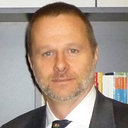In vitro human osteoblast and extracellular matrix changes after transforming growth factor beta 1 treatment.
Sleutelwoorden
Abstract
OBJECTIVE
Normal bone tissue is characterised by a balancing of osteoblast and osteoclast activity. The activity and differentiation of these cells are regulated by vitamins, hormones and cytokines. The action of these factors on bone tissue cells depends on the composition and mineralisation of extracellular bone matrix. In particular, transforming growth factor beta 1 (TGFbeta1) acts on collagen fibres, glycosaminoglycan secretion and on the enzymes correlated to the turnover of glycosaminoglycans. The normal functions of bone tissue also depend on its mineralisation, which is highly altered in the process of uraemia.
METHODS
In this study, we analysed in vitro the effect of transforming growth factor beta on osteoblast proliferation, collagen synthesis and glycosaminoglycan secretion with 3H-thymidine, 3H-proline or 3H-glucosamine incorporation, and on enzymes, such as beta-N-acetyl-D-glucosaminidase and beta-glucuronidase, involved in extracellular matrix turnover. Moreover, phosphatase alkaline activity and osteocalcin related to mineralisation of extracellular matrix were determined.
RESULTS
Our data show that TGFbeta1 significantly decreases 3H-thymidine and 3H-proline incorporation and increases (p < or = 0.01) extracellular sulphated glycosaminoglycan synthesis. It also increases osteocalcin levels, phosphatase alkaline, beta-N-acetyl-D-glucosaminidase and beta-glucoronidase activities.
CONCLUSIONS
TGFbeta1 changes the synthesis of extracellular matrix components by osteoblasts. These variations favour the action of cytokine and osteoclasts. Since the TGFbeta1 accumulates in bone tissue and increases during uraemia, with due limitations this action leads to an imbalance between synthesis and degradation and could explain bone alterations in uraemic patients.


